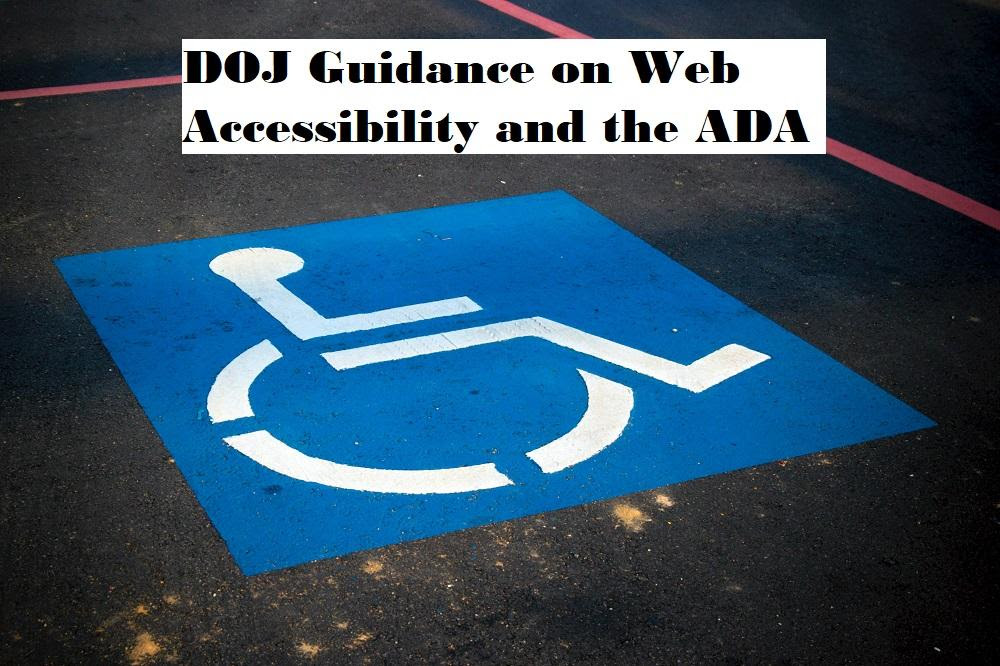In March, the Department of Justice (“DOJ”) issued Guidance on Web Accessibility and the ADA. This guidance explains how businesses open to the public can ensure that their websites are accessible to people with disabilities as required by the Americans with Disabilities Act (ADA).
The ADA requires businesses that are open to the public to provide equal enjoyment of their goods, services, and the like to people with disabilities. Retail stores, banks, hotels, medical offices, restaurants, theaters, and sports arenas are examples of businesses that are open to the public for purposes of the ADA.
The DOJ’s new guidance points out that an inaccessible website can exclude people just as much as steps at an entrance to a physical business location, so when a business open to the public has an inaccessible website, this violates the ADA.
For example, people with vision impairments are often unable to effectively navigate websites because they don’t have appropriate color contrast for the text to be legible, use color alone to provide information (e.g., the website uses only red text to show that information is required on a form), or contain visual content with no text description (no “alt text” on images).
Further, the website’s coding may be incompatible with assistive screen-reader software that reads the screen content aloud to the user.
Those with hearing impairments will not be able to access audio content without captions or transcripts. For example, videos should have captions or transcripts so that those with hearing impairments can fully understand the information communicated in those videos.
Even if your website is available to people with visual and hearing impairments, have you considered mobility-challenged people who may be unable to use a mouse? Your website should be coded for keyboard navigation functionality to allow navigation of the site without the use of a mouse.
To make sure your website is navigable by those with disabilities, you should hire a consultant who specializes in this area to audit your site and add the necessary enhancements.
Where possible, businesses should have an accessibility assistance number that can be called. This number should be answered by a trained customer representative who can help users with disabilities get the help they may need to navigate your website.
Although the DOJ links to the Web Content Accessibility Guidelines (“WCAG”) and Section 508 Standards, the DOJ does not require businesses to comply with any particular standard.
While you might feel you don’t have the funds to update your website to comply with the ADA, you’ll want to do so as soon as possible, since the DOJ guidelines indicate that web accessibility for people with disabilities is a priority.
In fact, the guidelines provide examples of cases involving the DOJ’s enforcement of the ADA with respect to websites, including Rite Aid’s COVID-19 Vaccine Registration Portal and Peapod’s website to order grocery delivery.
Please feel free to contact us if you have any questions about the above or about any other aspect of the ADA.
Photo by AbsolutVision on Unsplash






